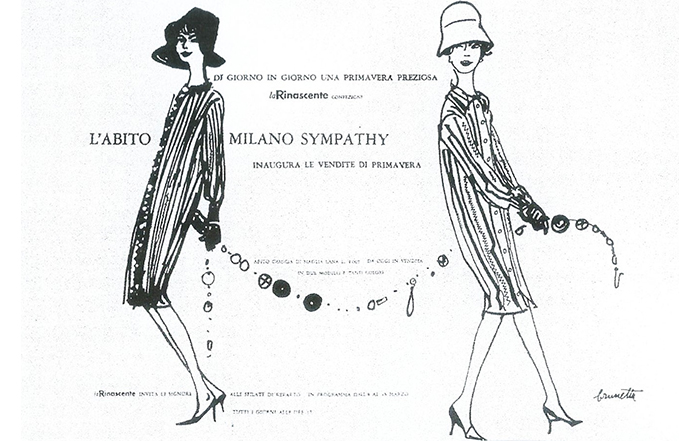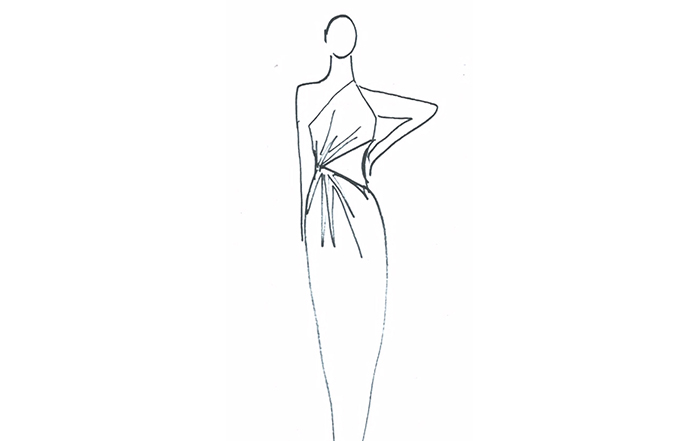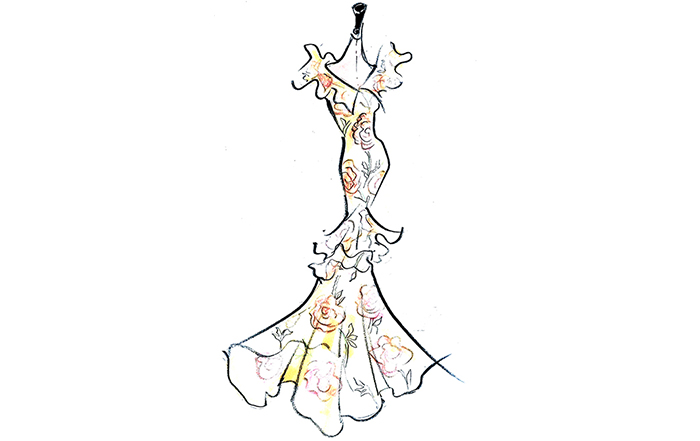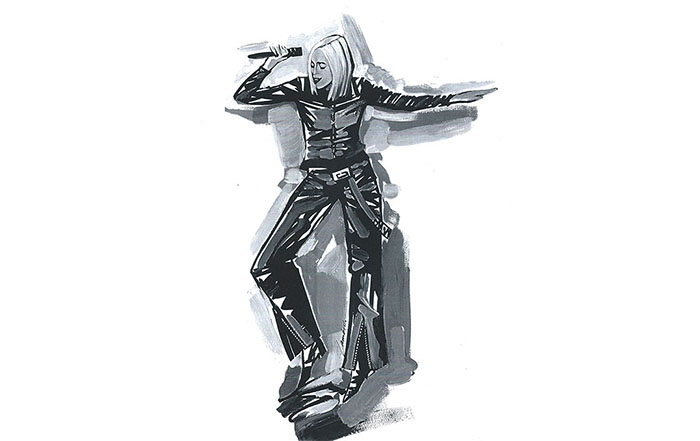by MARYLOU LUTHER
Illustration by Brunetta
Q Dear Marylou: Why are vertical stripes so difficult to find in knitwear?__H.G., Iron Mountain, MI.
Dear H. G.: I took your question to Rosita Missoni, who, with her husband Ottavio and sons Luca and the late Vittorio, and daughter, Angela, now ceo of the company, have truly defined knitwear in modern times.
Here’s her answer:
“In 1958 we wanted to make striped knitted dresses using vertical stripes. At that time, we had very simple machines but we had the possibility to make tubular plain striped knitted fabrics which we started to use vertically, making dresses and shirts not fully fashioned but with the classic cut and new method. It was our very first fine-knit dress with vertical stripes—a small collection called Milano Sympathy. It was our very first edition of 500 vertically striped dresses.”
(As background here, I quote Luca Missoni to explain why vertical stripes in knitwear were so difficult to achieve:
“Traditional kits are made as a sequence of horizontal passages of a thread along a bar of needles. The change of color or texture of the thread creates horizontal stripes. Normally, knits are used in clothing the way they come out of the machine. This way, the knit stitch has a tighter tension stability in the vertical compared to a looser one in the horizontal, thus giving knitwear its typical quality of comfort.
“To produce vertical stripes in simple knitwear you have to use the technique of intarsia or inlaid knitwear that consists of knitting a series of adjoined vertical knit sections. This technique produces vertical striped patterns maintaining the ‘right’ way of the knit. To manufacture this type of garment you need to use simple hand-knitting machines or technically complex automatic-knitting machines, thereby occasioning either a higher labor cost or a higher industrial cost.”)
In other words, you don’t see many vertical knits because they are too expensive for most companies to produce, and, therefore, too expensive for most stores to sell. The good news is that Missoni makes and sells vertical knit tops, including tanks, cardigans and pullovers in cotton, silk, silk blends, wool and cashmere. The largest selection in the U.S. is at the Missoni Boutique, 676 Madison Avenue, New York, NY., 10021.
Q Dear Marylou: I’m constantly bombarded on Fifth Avenue with Pashmina cashmere street sales. What is the difference between Pashmina and “regular” Cashmere?__W.W., New York, NY.
Dear W.W.: Pashmina is the finest grade of cashmere at 12 to 14 microns. The diameter of the fiber must be under 19 microns to pass as cashmere. (The human hair has a diameter of 75 microns.). Experts say the best cashmere yarn comes from the down on a Kashmir goat. Sixty-eight breeds of that goat roam the high, dry plateaus in 12 countries, from Northern China, Mongolia and the Gobi Desert to Tibet, Iran and Pakistan, and even in the in the American Southwest and Australia. Experts claim cashmere is eight times warmer than sheep’s wool.
Q Dear Marylou: I thought the idea of wearing somebody else’s initials went out with The ‘80s. How do you account for this new willingness to be a walking advertisement for brand monograms?__E.K., Littleton, CO.
Dear E.K.: The ‘80s are back in fashion. History is repeating itself. Twenty years is the usual nostalgia gap. And in The ‘80s many women were serious about right side up and upside down Gucci Gs, Fendi Fs, Louis Vuitton LVs and interlocking Chanel Cs, wearing then on earrings, buttons, handbags, shoes, even hot water bottles.
In addition to the return of initialed bags at Hermes, Chanel, Louis Vuitton and others, there’s a new loco-for-logos development. Now you can have your own initials on your own handbag, thanks to Personalized Initial Handbag. To see the selection, go to Danbury Mint.com.
According to a recent study in WWD, the new initialing is all part of a new “Personalization, described as “part of a bond-building through monogramming or detailing jeans, sportswear and jackets per customer specifications. WWD says it’s a trend that’s been a hit at Muji, the Japanese retailer which sells customized sneakers.
Q Dear Marylou: I’m a plus size with skinny legs. What can I do to help balance my torso with my legs?__G.H., Dallas, TX.
Dear G.H.: Pants are an obvious choice, especially in leg widths from medium to narrow, but not tight. Stay clear of tights and leggings. Boots that end an inch or so below the knees are another good choice for winter.
Marylou welcomes questions for use in this column but regrets she cannot answer mail personally. Please send your questions in.




